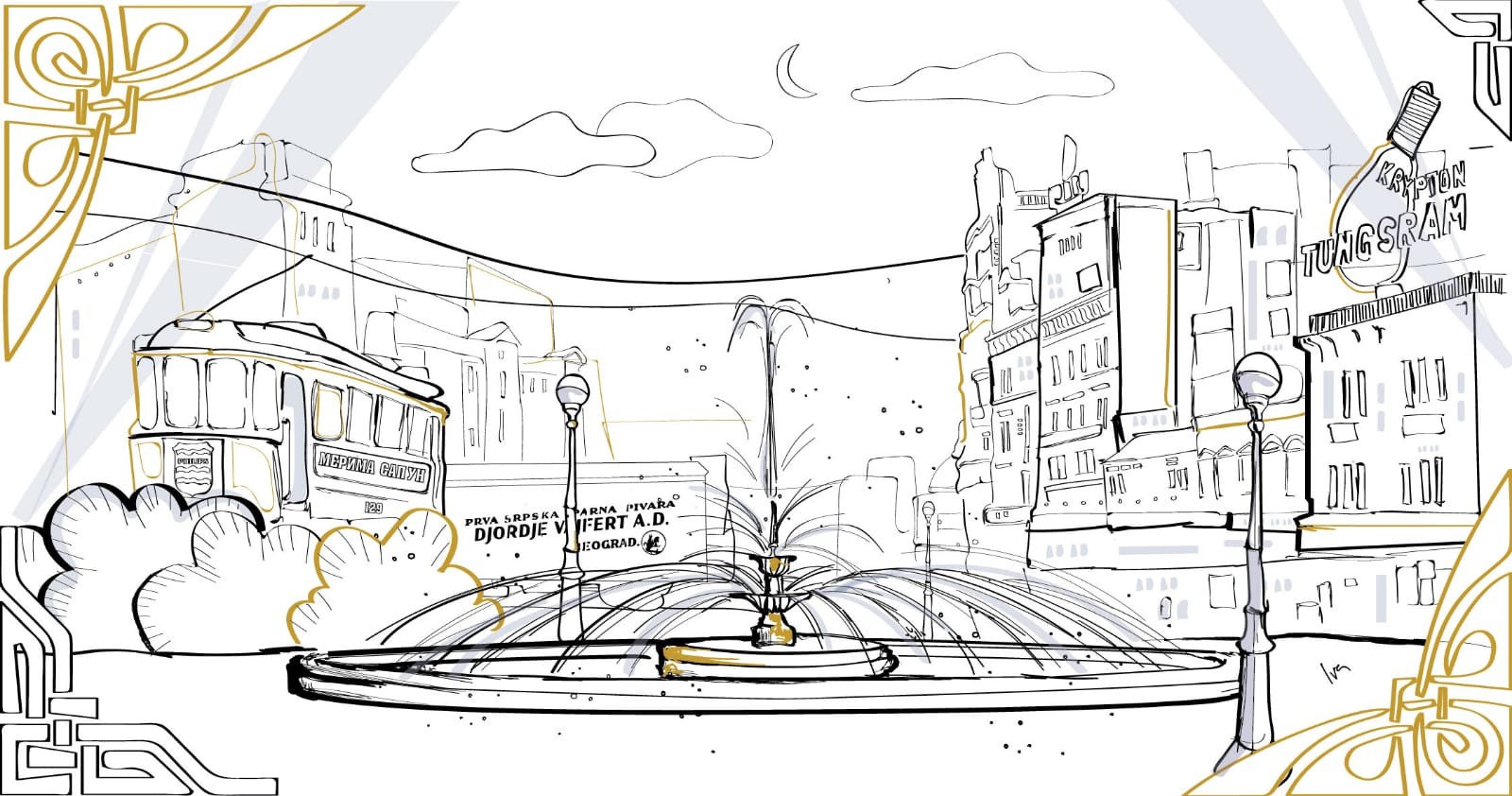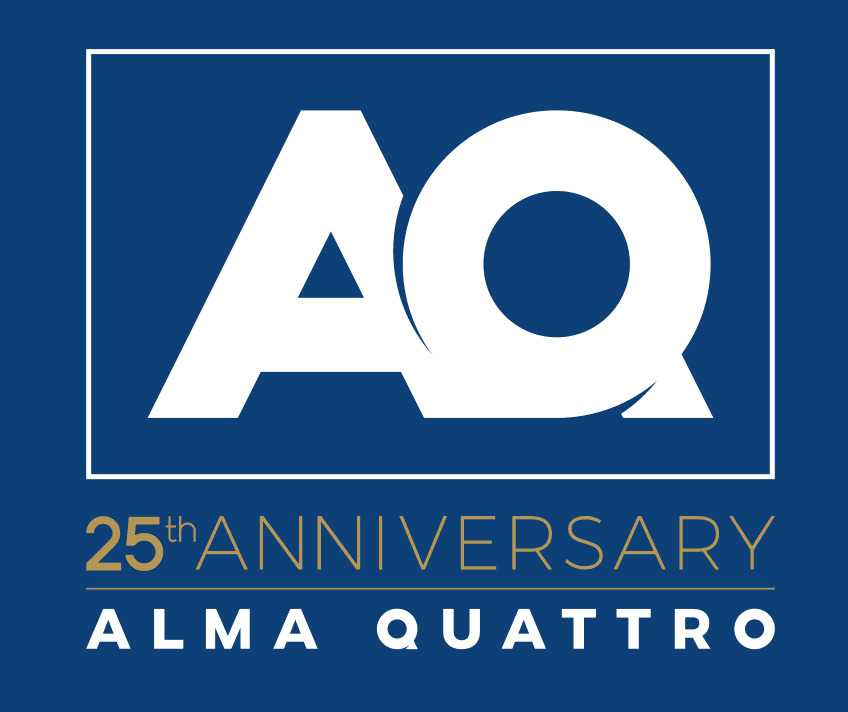
Copyright: Illustrator Iva Kujundžić
AN ADVERTISEMENT REFLECTED IN THE TERAZIJE FOUNTAIN
BELGRADE
SERIAL: OOH DEVELOPMENT IN SERBIA - PART 3
Created: Jul 31, 2019
The cobbled streets of Belgrade at the beginning of the 20th century did not know anything about outdoor advertising, but it does not mean that OOH advertising did not exist in its rudimentary form.

Point-of-sale advertising is not a creation of modern retail chains. The soap made by “Merima Kruševac” was advertised on a board that stood in front of a private shop in a busy street.

Famous Singer sewing machines, the basic work instruments used by our grandmothers and great-grandmothers, were advertised on posters on the walls of tailor shops. Again there is a link between a point of sale and, this time, work instruments as quality assurance.

In Skadarlija, during the severe winter of 1933, picturesque advertising posters displayed promises about products for a traveler or a guest if he decides to enter that particular bistro.

On one of the first petrol stations in Belgrade, Shell differentiated its pump from the competition by installing its trademark shell. The shell and the sign were supplied by electricity from the city network to be illuminated during the night.
The number of the registration plate can give an approximate estimate of the minimum number of registered vehicles, while their speed in comparison to classic carriages is questionable, if we take into consideration the twirl of the carriage that was hardly captured in the frame.

And advertisements continued to follow a customer on locations where he or she would stay for some time, even near a shoeshine boy.

To some extent, out of home advertising could also refer to newspapers, which were read and exchanged by citizens while walking down muddy streets. Therefore there is a multiplication of the expected number of readers per copy, which still applies today when assessing the printed media readability.

Almost 10 years before Milena Barili* started illustrating advertisements in fashion magazines for the elite in the Big Apple, ladies who were strolling along Belgrade streets also browsed the weekly magazine for social life, Svijet.
*Alma Quattro was one of the media sponsors of the exhibition of Milena Pavlović Barili, held for 3 years in the House of Jevrem Grujić.

An advertising poster from Svijet magazine in Art Deco style, painted by Otto Antonini (1931).
On the covers and pages of Svijet, there were Art Deco illustrations of Otto Antonini, the pioneer of graphic design in the region. Otto brought the visual identity of Svijet to the level of the world fashion magazine such as Parisian L’Illustration, and shaped the roaring twenties pop culture in the region. By reading Svijet, Mademoiselles and Mesdames of that time had access to information about miraculous beauty products we still know nowadays.

One of the wonderful illustrations that decorated the travel brochures in 1935 was an art deco advertisement for the forerunner of Air Serbia or JAT, the first joint stock company for civil air transport of the Kingdom established in 1927.

Only in the 20th century factories came up with an idea that a moving advertisement that follows citizens is the best advertisement. The innovative Phillips and Brazilian Coffee put their advertisements on a bus in 1932.

The first tramway clattered on the cobbled streets of Belgrade in 1894 and this photograph proves that Merima Kruševac advertised its products on a tramway carriage in 1937.

One of the precursors of today’s car graphics is a branded carriage from 1942, in which Đorđe Vajfert transported his products.
With one message this advertisement refers to the cargo in the carriage as well as to the competitive advantage of the producer – the first Serbian steam brewery.

In the 1930’s Terazije square was decorated for the first time and the advertisements supplied by electricity illuminated the darkness from the building tops.
The most impressive was the illuminated light bulb that was advertising itself.
Note: We are very grateful to the administrators of Facebook pages “Stari Beograd kojeg više nema” (Old Belgrade) and "Crno-beli Beograd" (Black and White Belgrade) for their rich archives of photographs that visually enriched this article.
Would you like to find out more? Continue reading...

